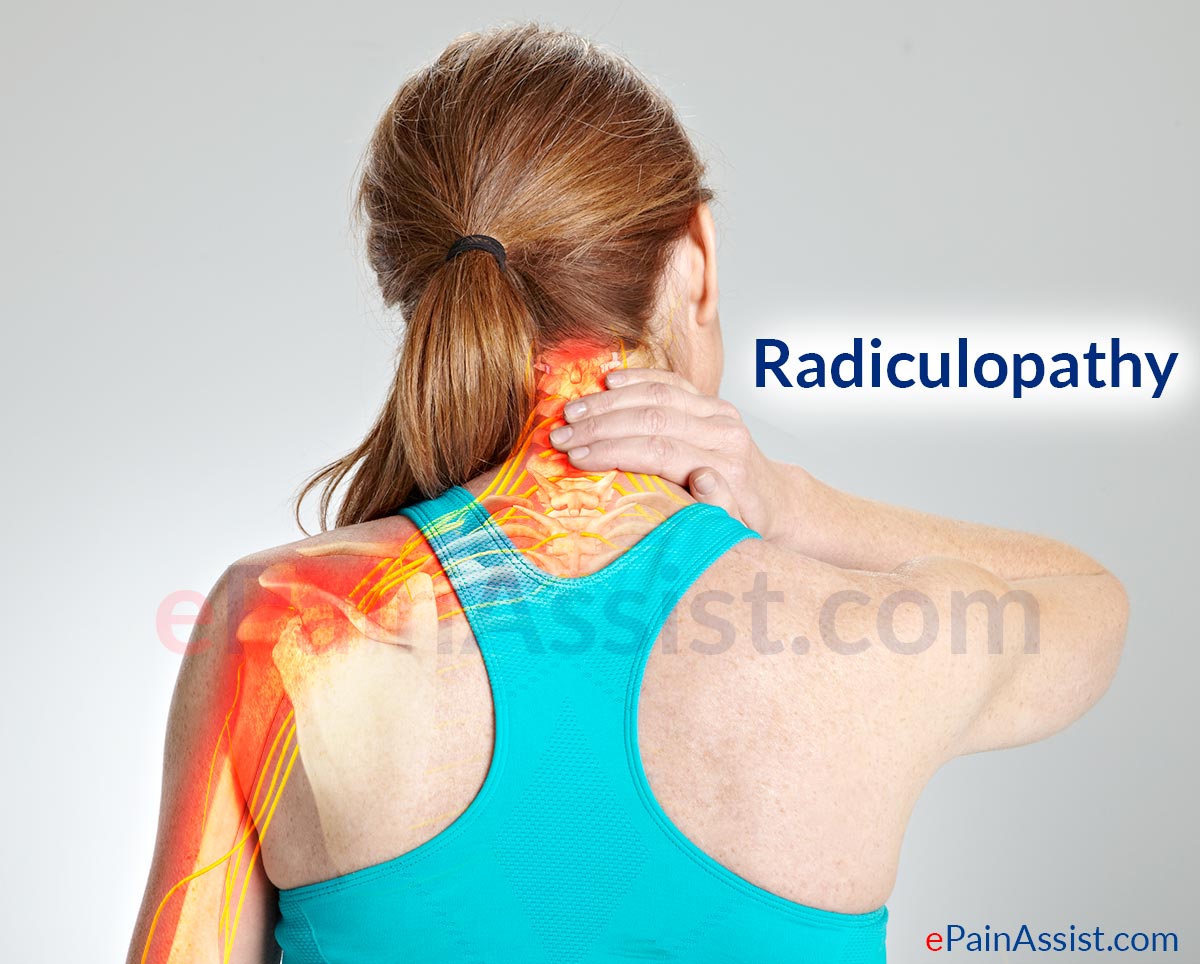Back pain is spread in neck, upper extremities, thorax, lower back, and legs. Back pain is caused by muscle spasm, tendinitis, pinched spinal nerve, or facet joint disease. Back pain when caused by irritation of spinal nerve is also known as radicular pain.1 Radiculopathy is a diagnosis of radicular pain associated with tingling, numbness, and weakness. Radicular pain or Radiculopathy is spread along the nerve in neck, upper extremity, thorax, abdomen, lower back, or lower leg.2 Epidural steroid injection is one of the interventional treatments offered to patient suffering with radiculopathy or radicular pain.

Anatomical Classification of Radiculopathy or Radicular Pain
- Cervical Radiculopathy and Radicular Pain- Pain is observed in neck and upper extremity. Spinal nerve involved is cervical nerve C1 to C7.
- Thoracic Radiculopathy or Radicular Pain– Pain is observed in mid back, side of the chest and front of the chest. Spinal nerves involved are thoracic spinal nerve T1 to T12.
- Lumbar Radiculopathy or Radicular Pain– Pain is observed in lower back, groin, perineum, gluteal dermatome, and lower leg. Spinal nerve involved is lumbar nerve L1 to L12.
- Sacral Radiculopathy or Radicular Pain– Pain is observed in feet and perineum. Spinal nerves involved are cervical nerve S1 to S2.
Pathophysiology of Radiculopathy or Radicular Pain
- Pain is caused by irritation of the nerve. Nerve is irritated secondary to pressure, pinch or irritation by chemicals produced by inflammatory tissue.
- Disk herniation and bulge disk when protrudes in to foramina causes pinch and irritation of spinal nerve. Disk bulge and herniation also causes disk inflammation. Inflammatory disk produces chemicals such as substance P and prostaglandin E2. An inflammatory chemical irritates spinal nerve either in spinal canal or foramina.
- An inflammatory chemical also causes swelling of the nerve.
Causes of Radiculopathy or Radicular Pain
- Disc Herniation– Nucleus of cervical, thoracic and lumbar disc penetrates through the outer ring (the annulus) of disk causing tear of fibrous coverings and triggers inflammation.3 Inflammatory chemical causes irritation and swelling of nerve resulting in severe pain.
- Disk Bulge– Nucleus of the disk pushes the outer layer causing disk bulge. Bulge disk presses the nerves within foraminal tunnel and causes swelling of pinch nerve resulting in severe pain.
- Degenerative Disc Disease- Disk becomes thinner by degeneration and narrows the foramina causing foraminal stenosis. Foraminal stenosis secondary to collapse of the disc impinges the spinal nerve in foramina causing irritation of nerve and swelling resulting in severe pain.
- Lumbar Spinal Stenosis- Spinal cord and spinal nerves lies in spinal canal. Narrowing of the spinal canal is called spinal stenosis. Spinal stenosis strangles spinal cord and spinal nerves. Inflammatory spinal stenosis caused by trauma or arthritis causes secretion of inflammatory neurotransmitters and also swelling of nerve by inducing pressure.
- Synovial Cysts- can cause pressure over facet joint and spinal nerves resulting in severe radicular pain and facet pain.
- Foraminal Stenosis– Spinal nerve passes through the foramina into visceral tissues. Foramina are narrowed by disk shrinkage in degenerative disk disease or traumatic injury to vertebral body. Thin degenerated disk is observed in degenerative disk disease, old age and trauma. Traumatic degeneration of disk is caused by fall, work accident and auto accident. Vertebral body fracture as a result of degenerative diseases, osteoporosis and traumatic whiplash injury also causes spinal and foraminal stenosis or narrowing. Foraminal or spinal stenosis associated by inflammatory arthritic disease and traumatic injury causes pressure on spinal nerve within foramina followed by radicular pain or symptoms of radiculopathy.
Watch 3D Video of Cervical Radiculopathy, Disc Bulge, Disc Herniation:
Characteristics of Lumbar Radicular Pain (Sciatica Pain)
- Radicular pain is severe and intense burning pain.
- Pain is continuous or intermittent.
- Radicular pain is directed along the course of spinal nerve.
- Spinal nerve pain is dermatomal pain. Dermatomal distribution of pain is observed in neck, upper extremity, chest, abdomen, and lower leg.
